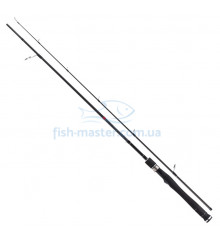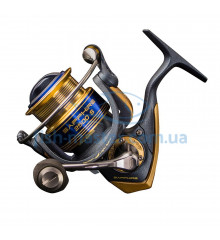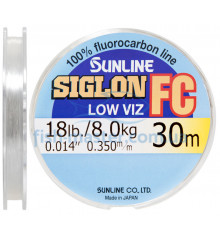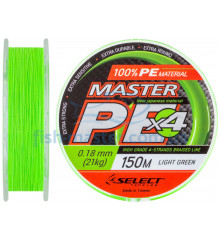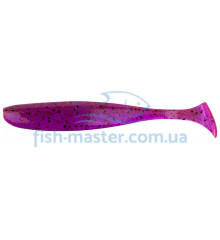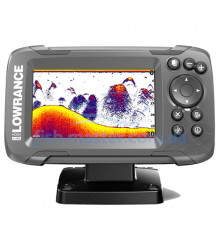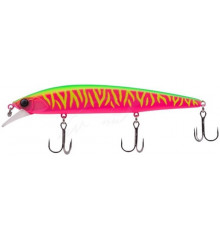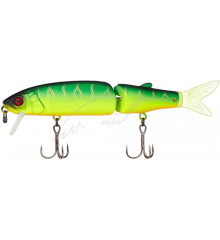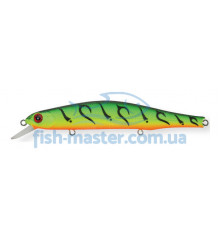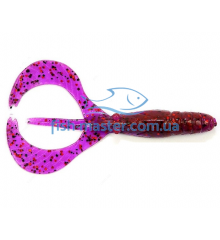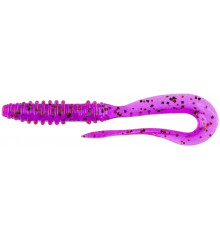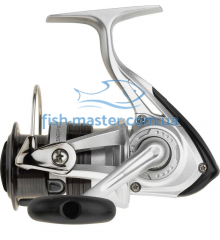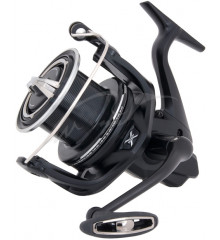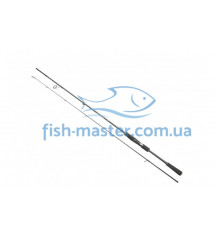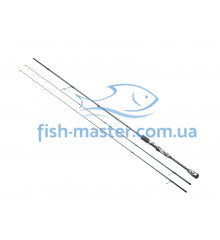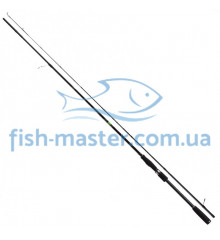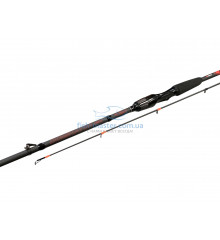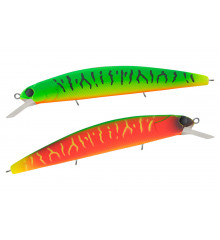Fisherman's Calendar 2020
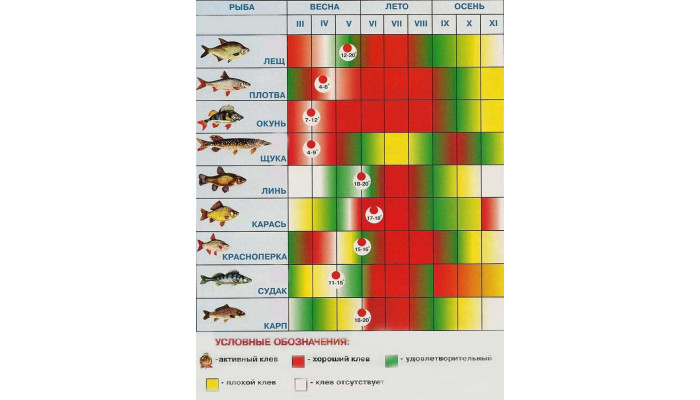
LUNAR FISHERMAN CALENDAR 2020
Fisherman's Calendar 2020 helps fishermen to find out in what periods this or that fish bite.
The moon, atmospheric pressure, wind and sun conditions also affect the bite of fish, therefore, when preparing for fishing, all conditions must be taken into account.
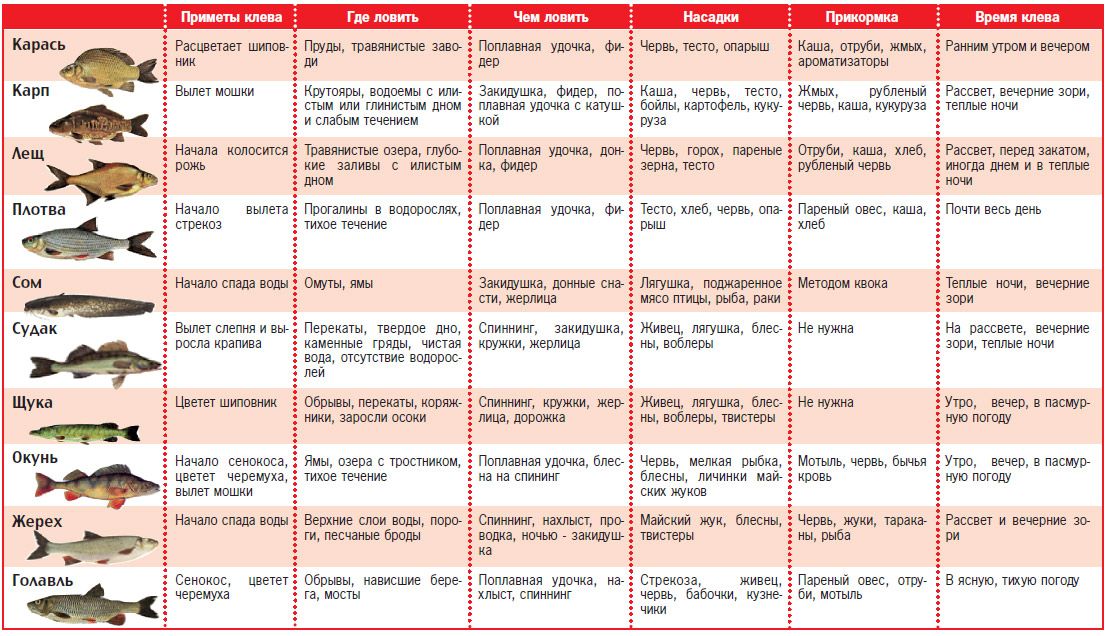
Fishing lunar calendar 2020
Experience is a stubborn thing, like statistics - there are errors, but you cannot ignore it. Therefore, we suggest that you study and take note of the lunar fishing calendar for 2020. The influence of the moon on our planet is enormous, but we often forget about it. So the ebb, flow and other influencing factors directly affect the biting activity of fish, not only sea, but also river.
Moon phases 2020
The calendar shows 4 main states of the moon in each month of the year, that is, its phase:
- New moon - new moon
- The growing moon is a crescent
- Full moon - full moon
- Waning moon - crescent

From the prevailing and already classics, it is believed that the best bite is possible on the fourth and fifth days of the new moon. The lack of bite is more likely to be expected three days before the full moon, and up to 4 days of the new moon.
Fisherman's lunar calendar for 2020
Fisherman's calendar by day for 2020 and months:
The above calendar reflects the estimated fish bite, based not only on changes in the heavenly body.
Fish bite calendar for 2020
Consider the fish biting in each month of the eighteenth year separately, depending on the moon.
Fishing lunar calendar january 2020
| MON | VT | Wed | Th | PT | Sat | Sun |
|---|---|---|---|---|---|---|
| one | 2 | 3 | four | five | ||
| 6 | 7 | eight | nine | 10 | eleven | 12 |
| 13 | fourteen | fifteen | sixteen | 17 | eighteen | nineteen |
| twenty | 21 | 22 | 23 | 24 | 25 | 26 |
| 27 | 28 | 29 | thirty | 31 | ||
| 1 - great bite; 2 - good bite; 3 - weak bite; 4 - there is no bite. | ||||||
During this period, the amount of oxygen in the water is minimal, the fish practically does not move. It is especially difficult for her in reservoirs with dense vegetation, which begins to rot under the ice, releasing hydrogen sulfide and carbon dioxide. In closed stagnant reservoirs, death often occurs - mass death of fish due to lack of oxygen. To avoid freezing, it is necessary to make artificial holes or holes in the ice.
January, the month considered by fishermen to be a deaf winter, can in fact please with good bites of roach, podleschik, gudgeon, perch, pike. The tent should be spacious, made of dense material, it is necessary to dress warmly and be patient, since at night the bream can be taken infrequently, but it is large.
Promising days in terms of excellent biting in January:
from 1 to 4, from 17 to 20, as well as from 29 to 31 of the month.
Days when good fish bite is expected:
5-8, 14-16, 21, 22, 28
Bad fish bite:
from 9 to 13, from 23 to 27
In mild winters with relatively low average temperatures, fish activity is somewhat higher. Fishing with girders, balance weights and spinners can be successful. For luring medium perch, it is advisable to choose a snag with a depth of 1.5–4 m, located not far from the coast. Areas on the border of shallows and depths can be good. In the same places, you can catch pike with larger oval spoons. Pike and perch grounds are often found on tables and irrigation areas adjacent to flooded channels. Here, for each type of fish, you need to install the appropriate girders. It is better to search for a zander flock by the method of frontal rearrangement of the vents in the pits adjacent to the snag. Decent results are obtained by spinning with baits from a piece of fish, fry, fish eye.
It is not excluded to catch bream at night with a "bat" lantern. The location should be selected in advance by trial fishing in different holes. The tent should be spacious, made of dense material, it is necessary to dress warmly and be patient, since at night the bream can be taken infrequently, but it is large.
When fishing during the day, it should be borne in mind that large fish do not always stand in deep holes. However, it has been noticed that seasoned individuals do not like too lit places, it is better to look for them under shaded steep banks, trees and shrubs. So, on holidays, you should devote your time to fishing and searching for catching spots and large fish!
Ruff, roach, perch, blue bream, silver bream, podleschik, bleak are caught on the jig with the hooking of burdock moth or bloodworm larvae. Grayling continues to peck on a float rod and a jig with an attachment of a worm or a bunch of bloodworms.
If the winter is cold and snowy, then don't expect good fishing. Biting at this time is extremely unstable, the fish can make short migrations to more favorable places only in case of a lack of oxygen.
The ice in January is usually quite thick, and sometimes you have to sweat a lot to cut a hole. From under the ice, trolleys catch grayling, nelma, lenok, taimen, and in cloudy weather - burbot.
Fishing lunar calendar for february 2020
| MON | VT | Wed | Th | PT | Sat | Sun |
|---|---|---|---|---|---|---|
| one | 2 | |||||
| 3 | four | five | 6 | 7 | eight | nine |
| 10 | eleven | 12 | 13 | fourteen | fifteen | sixteen |
| 17 | eighteen | nineteen | twenty | 21 | 22 | 23 |
| 24 | 25 | 26 | 27 | 28 | 29 | |
| 1 - great bite; 2 - good bite; 3 - weak bite; 4 - there is no bite. | ||||||
February is a month of snow drifts, blizzards and snowfalls, as well as long stable thaws. Fishing on the so-called "helicopter" can be successful. To get to the exit of bream, silver bream or blue bream, anglers place up to a dozen or even more of these tackles. For vertical lure of pike, pike perch, perch, they choose mainly deep places, and a balancer or small spoon - up to 3.5 cm.
Promising days in terms of excellent bite in February: from 1 to 3, from 16 to 18, as well as from 27 to 29 of the month.
Days when good fish bite is expected: from 4 to 7, 13-15, as well as 19, 20, 26
Bad fish bite: 8 to 12, 21 to 25
However, the possibility of death is still great, and therefore reservoirs need human help. Determining the onset of freezing is not difficult: just drill a few holes and take a closer look at the behavior of the underwater inhabitants. Bugs and fry rise to the air, and when it is completely unbearable, then an adult fish: roach, bream, rudd, tench. The pike approaches the shores in search of springs and water drainage points.
Somewhere in the middle of the month, the first thaw sets in. Ice on such days begins to "float", and during sudden temperature changes it takes on the appearance of a puff cake. Ruff, especially small ruff, perch, roach, silver bream, bream, blue bream, chub, dace, podust are activated. Bleak by the end of the month gathers in large flocks, schools of zander may approach the places of its accumulation near bays and rivers flowing into the reservoir. Breams are sometimes removed from winter camps, going to shallow places in search of food.
Fishing lunar calendar for march 2020
| MON | VT | Wed | Th | PT | Sat | Sun |
|---|---|---|---|---|---|---|
| one | ||||||
| 2 | 3 | four | five | 6 | 7 | eight |
| nine | 10 | eleven | 12 | 13 | fourteen | fifteen |
| sixteen | 17 | eighteen | nineteen | twenty | 21 | 22 |
| 23 | 24 | 25 | 26 | 27 | 28 | 29 |
| thirty | 31 | |||||
| 1 - great bite; 2 - good bite; 3 - weak bite; 4 - there is no bite. | ||||||
The day in March increases noticeably, the sun's rays penetrate the under-ice space more and more actively, and a good bite of fish begins on the last ice. They take roach, perch, podleschik, "royal" ruff, silver bream, and by the end of the month - chub, ide, sometimes even crucian carp and carp. The fish greedily grabs the bait and strongly resists when fishing.
Promising days in terms of excellent bite in March: from 1 to 3, from 16 to 18, as well as from 28 to 31 of the month.
Days when good fish bite is expected: from 4 to 7, 13-15, 19, 20, 27.
Bad fish bite: from 8 to 12, from 21 to 26.
The fish is becoming more active every day, spring spawning is not far off. Gathering in flocks, it leaves the winter pits and begins to make significant migrations in search of food and fresh water. Most often, it can be seen below the swirls, near the rifts, in shallow water near the mouths of rivulets and streams that carry food. White fish sometimes rises to the upper layers, right under the ice. The pre-spawning pike feed begins, perch and pike perch are taken. Especially good biting happens on the border of light and muddy water, on the shallows, in the places of the suvodi.
In reservoirs with a slight current, refreshed by spring waters, on medium and heavy jigs, as well as on float rods with bait, creeper and bream are caught.
In the reservoirs of the southern regions, all fish begin to take well: rudd, gudgeon, asp, crucian carp, sabrefish, chub, large perch, bersh, pike perch, pike, roach, spawned burbot. If the heat is stable, then medium and large bream are well caught. You can search for it with a summer fishing rod equipped with a nod and jig, or catch it with a float rod designed for long-distance casting. Bloodworms, dung worms, and sometimes maggot are used as bait. Donka also gives good results. You can actively use vegetable baits on the bottom with a feeder. The best baits here are considered bloodworms, bark beetle larvae, dung worm, which can already be found in thawed manure.
In March, as you know, the vernal equinox occurs. Fish at this time rushes to the open sections of rivers, to the mouths of tributaries, enters the oxbows. When there are extensive gullies, you can switch to the summer tackle. In such areas, they fish with might and main with a spinning rod. Pike and ide are the first to enter the open water, but if the weather is warm, then other fish.
The best bite is in clear sunny weather. You can start fishing in March with fishing for ide, perch, bastard and roach in the open rivers, where fish enter from lakes and reservoirs. You can completely do without feeding, since the fish are very hungry after the winter torpor. They start to take the dace well, podust. The burbot, hungry after spawning, is in a hurry to replenish its fat reserve, and it is taken from the ice to the vents at night. If you find the intersection of burbot paths, success is guaranteed. Usually these are shallow areas of the bottom with rocky or gravel-sandy soil. The pike perch is becoming more active. Its favorite feeding places are shallows, backwaters, mouths of rivers flowing into the reservoir, underwater heights and their slopes, average depths near pits.
The best biting of any fish, except for burbot, during this period is observed in the morning until noon, but if the east wind suddenly blows or becomes sharply colder, the bite deteriorates. And yet spring takes its toll. Now you need to play the spoon more actively and search for fish more broadly. Fishing for large perch, pike and pike perch is quite effective.
Fishing lunar calendar april 2020
| MON | VT | Wed | Th | PT | Sat | Sun |
|---|---|---|---|---|---|---|
| one | 2 | 3 | four | five | ||
| 6 | 7 | eight | nine | 10 | eleven | 12 |
| 13 | fourteen | fifteen | sixteen | 17 | eighteen | nineteen |
| twenty | 21 | 22 | 23 | 24 | 25 | 26 |
| 27 | 28 | 29 | thirty | |||
| 1 - great bite; 2 - good bite; 3 - weak bite; 4 - there is no bite. | ||||||
There is flood on the rivers, but by the end of the month the water gradually begins to brighten, its level in the rivers decreases. The sun can shine brightly during the day, and freezes at night.
In April, the spring movement of fish to spawning grounds begins. She loses caution, as they say, goes ahead. The turbidity that appears in the rivers forces it to come to quiet, clean places near the banks. Almost all fish willingly enter old channels, channels, ide goes into shallow rivers. Spawning soon. Ruff, perch, dace, rudd, gudgeon, chub dive in search of food.
Promising days in terms of excellent biting in April: 1, 2, from 15 to 18, as well as from 27 to 30 of the month.
Days when good fish bite is expected: from 3 to 6, 12-14, 19, 20, 26.
Poor fish bite: from 7 to 11, 21-25.
By the end of the month, the spawning pike begins to eat here. It should be caught in pits below the rifts, on sandy shoals, on quiet stretches near the shores overgrown with vegetation, in places flooded with spring water, in shallow bays. Good results are obtained by soft spinning lures and lures; it is better to catch this predator with a live bait float rod near thickets of aquatic vegetation. A large ide, roach, podust, silver bream, bog beetle, perch, medium-sized asp can peck on bark beetles, worms and caddis flies.
Usually in April, fish gathers near spawning grounds - these are oxbows, channels, bays with developed aquatic vegetation, shores overgrown with bushes, wide streams. It is better to choose places with a quiet current, below the rifts, near the estuarine shoals. The tackle should have a very sensitive float and a small sinker. Worms, bloodworms, bark beetles, caddis flies are used as bait. At this time, the burbot feels good. Continuing to actively feed, it goes to depths near steep banks.
With the first enlightenment of water in river beds, dace and grayling begin to spawn on stones. In the water, ide is cleaner, choosing rifts clogged with soil sediments, floodplain spills and channels, and as the water level falls - asp. In non-flowing, closed and low-flow reservoirs, where ice still holds, they continue to fish from the ice with a jig and float rods. For an active game with a jig, they take perch, roach, ruff, a small pike perch, a small pike, and it is better to catch bream, silver bream and blue bream with bait on float rods or use a smooth game with a jig at the very bottom.
In the lead, on float and bottom fishing rods near the channels, on reaches and from bridges, bream, ide and roach are caught. On a weak current with a depth of 2–3 m in the bottom zone, chub, roach, dace and silver bream are taken. As a nozzle for them, you can use a worm, bark beetle, bloodworm, maggot, various aquatic larvae. Bream is active only during the daytime. A bunch of dung beetles, bloodworms, a crawl, a bunch of maggots serve as an attachment for catching it. Soon he will go to spawn, but for now he takes good float rods from the bottom to the bottom.
By the beginning of May, reservoirs are almost everywhere free of ice, and fishing takes place in open water. You can fish with a donkey, spinning rod, float tackle and harness. The spawning of dace, asp, podust and ide ends, and roach and grayling begin. Roach is especially active. She takes the harness on bloodworms, small dung beetles or maggots. Large roach is caught on bottom tackle with a worm, crawling, maggot attachment. At depths near the thickets, rudd and bream are already pecking well on a float rod, a nozzle - a worm, caddis flies, maggot and bloodworms. The asp starts to take on the spoon.
Fishing lunar calendar for may 2020
| MON | VT | Wed | Th | PT | Sat | Sun |
|---|---|---|---|---|---|---|
| one | 2 | 3 | ||||
| four | five | 6 | 7 | eight | nine | 10 |
| eleven | 12 | 13 | fourteen | fifteen | sixteen | 17 |
| eighteen | nineteen | twenty | 21 | 22 | 23 | 24 |
| 25 | 26 | 28 | 29 | thirty | 31 | |
| 1 - great bite; 2 - good bite; 3 - weak bite; 4 - there is no bite. | ||||||
Spawning time for most fish. Behind dams and rapids, in whirlpools, asp and pike perch are caught on live bait. Verkhovka, gudgeon, bleak are suitable as a nozzle for bottom wiring. In early May, trout is good at crawling out or a large dung beetle, and on artificial breeding ponds, a good attachment for it is the meat of defrosted shrimp.
Promising days in terms of excellent biting in May: 1, from 14 to 17, as well as from 26 to 30 of the month.
Days when good fish bite is expected: 2-5, 11-13, 18, 19, 25, 31.
Bad fish bite: from 6 to 10, from 20 to 24.
Roach, bream, crucian carp, podust, chub, gudgeon and other fish spawn. In roach, which feeds even during spawning, the bite is quite stable, and it takes on the old baits. At the beginning of the month, donks and wiring continue to catch blue bream, silver bream, dace, bream, ide and chub. The bite of the bleak is enhanced. She is caught in a wiring with a nozzle in the form of a bloodworm, maggot, caddis flies. In shallow water and in places with last year's vegetation, reluctantly, they begin to take tench, carp and crucian carp with a float rod. Their bites are weak, careful, but nevertheless, several good specimens can be pulled out on bloodworms or dung beetles, maggots. He takes podust for bloodworms, caddis flies and worms. It is better to catch it in the harness on a rift with a slight current.
The biting of large burbot stops, and small burbot can still be caught on the bottom at night. Pike continues to be caught with bait, bottom and float rods with live bait. With the advent of the May beetles, they begin to fish for chub and ide with a “household” fly fishing and run on top. The best time is in the morning before sunrise. From the second half of the month in bays and on oxbows on the border of vegetation, near pits and on quiet shallow reaches with a hard bottom, at small - up to 1.5 m - depths at night on the bottom you can catch catfish.
With the advent of the May beetles, they begin to fish for chub and ide with a “household” fly fishing and run on top. The best time is in the morning before sunrise. When biting, they do not immediately hook: you need to let the fish grip the beetle harder. You can also catch beetles with a donkey, choosing the place where they most often fall into the water.
In places with a quiet current, silver bream, perch, roach, ide, breeder are taken to the bottom and float rods, although the bites are not always reliable.
When trees bloom, you can use small caterpillars and all kinds of flying insects, as well as nymphs: dragonfly larvae, mayflies, stoneflies. Such nozzles as a worm, bark beetle, caddis flies, maggots, bloodworms are also good. One of the best baits is the dragonfly larva or the dragonfly itself, especially if caught in the places of their greatest exit. The fishing rod is thrown to the very border of the algae, allowing the bait to sink to the bottom. After a pause, the larva is slowly lifted up and the procedure is repeated. If a chub, rudd, tench, perch, roach, ide or chub live in the chosen place, they will definitely give themselves away with a confident bite. It is best to use a fishing rod with a side nod and a jig for such fishing. Successful results are obtained by fishing with a float rod on top of the butterflies of stoneflies, caddis flies.
From the second half of the month in bays and on oxbows on the border of vegetation, near pits and on quiet shallow reaches with a hard bottom, at small - up to 1.5 m - depths at night on the bottom you can catch catfish. It is noteworthy that during or before a thunderstorm itself, it rises to the surface and is caught with a float rod on top or in half water.
Against the background of a general weakening of the bite by the end of spring, the ide takes well: it keeps on the pits behind the rifts and fits under the vegetation hanging over the water. For ide they go out in the evening and at night with bottom, float rods or with a spinning rod. The bait or nozzle is wired near the bottom. Often, closer to night, the ide goes out to sandbanks. As bait for fishing rods and donoks, worm, crawling, maggots, peas and other steamed grains are used, and for spinning - rotating perch spoons. In muddy water, the ide takes best in the morning, and when the water is completely brightened, it switches to night feeding.
By the end of May, spawning of pike perch begins, its biting weakens. The pike go into the pits, and the trout go to the upper reaches of the rivers and closer to the springs. Although in relatively shallow areas of water bodies, silver bream, breeder, roach, ide, chub, trout, dace, carp, crucian carp are still taken, most of them, as the water warms up, go to a depth or to shaded, cooler places. Even perch and ruff are often found in deeper places by the beginning of the hot summer.
Fishing lunar calendar for june 2020
| MON | VT | Wed | Th | PT | Sat | Sun |
|---|---|---|---|---|---|---|
| one | 2 | 3 | four | five | 6 | 7 |
| eight | nine | 10 | eleven | 12 | 13 | fourteen |
| fifteen | sixteen | 17 | eighteen | nineteen | twenty | 21 |
| 22 | 23 | 24 | 25 | 26 | 27 | 28 |
| 29 | thirty | |||||
| 1 - great bite; 2 - good bite; 3 - weak bite; 4 - there is no bite. | ||||||
The first month of summer sometimes pleases with warm weather, but it is often quite cold, which affects the bite. Nevertheless, summer has come, and if the days are sunny, the water warms up quickly. In early June, as soon as the water warms up above 18–19 ° С, carp, carp, tench, and rudd begin to spawn.
Promising days in terms of excellent bite in June: from 12 to 6, as well as from 25 to 29 of the month.
Days when a good fish bite is expected: from 1-3, 9-11, 17, 18, 24, 30.
Bad fish bite: from 4 to 8, from 19 to 23.
The fish, mainly after spawning, choose suitable places for themselves, which usually do not move far from. At this time, aquatic vegetation grows rapidly, and many different foods appear for the fish. Bait and bait in June are the components of fishing success. The most attractive food is local food. For example, if there is a lot of mint in the fields, mint drops are added to the porridge, and where the sunflower grows, they use cake or cake. The bait should be scattered in small portions so that the fish does not get fed up and does not stop paying attention to the bait. Many fish are attracted by baits and baits that contain insects that appear in abundance this month: bugs, dragonflies, mosquitoes, butterflies, caterpillars.
White fish, spawning in May, already bite well both on insects and their larvae and on vegetable baits: cake, peas, semolina, steamed wheat, oats, barley, oatmeal. Pike prefers live bait, perch - fry and worm, catfish - frog and crawling, eel - a bunch of worms. Crayfish begin to shed in June. Fearing to become easy prey for fish, they try to sit in burrows until they acquire new "armor". But it is during the molting period that crayfish meat is one of the best baits on which you can successfully catch ide, catfish, chub, perch and some other fish.
For fishing to be successful, you need to know the exact local weather forecast and monitor the development of aquatic and coastal vegetation, as well as the emergence of insects. Say, brown-green caterpillars of urticaria appeared on the coastal bush - it means that chub and ide are hunting somewhere nearby. Do not give up caterpillars and roach, rudd, brood, silver bream.
The oxygen content in the water at this time is highly dependent on the temperature of the water itself, and therefore, the location of the fish will depend on where there is more oxygen. During the night, the upper layers of water cool faster than the lower ones, the oxygen content in them increases, so most fish rise to the surface late at night and early in the morning. When the sun begins to warm up, they go back to the depths. Burbot is looking for cold pits, holes and other "nooks". That is why, on hot days, biting activity decreases, and many species of fish generally only switch to night food.
It is noticed that a slight cooling after the heat improves biting, and even a strong east or north wind does not affect it. Certain species of fish (perch, chub, grayling) in such weather stay on the wave, and most cyprinids generally prefer to swim near steep clay banks, since the strong surf, along with clay, washes various food from the shore (bugs, larvae, worms, etc.) .). Carp, carp and bream often stay on the border of muddy and clear water in shallow waters. Fish that are active in cold weather, such as roach, bream, perch, ruff, generally eat little in the heat and bite is weak. It improves only when it gets cold or in rainy, stormy weather. A strong profit from rainwater somewhat enhances the bite, since a lot of profit is washed into the reservoir for fish, but this does not last long until the water finally brightens.
When it rains, a pike approaches the shore, and its best bite is seen in cloudy weather. During a warm rain, roach takes well. By the end of the month, usually all the fish are eaten away and become lazy, many of them hide in the rapidly growing aquatic vegetation, as well as in snags and deep pools. It is not so easy to lure fish out of these places. Therefore, many fishermen use various tricks, in particular aromatic additives: drops of anise and mint, sunflower and olive oil, camphor and valerian, vanillin and other strong-smelling substances.
Trout and grayling continue to be caught in cold waters. Grayling takes bait from the surface, and trout from the bottom, preferring a sinking bait, which is suitable for worms, flies, grasshoppers and other insects. It is better to fly these fish with appropriate flies.
On a fast current with a relatively flat bottom, it takes a podust well, which is kept in flocks and, if properly fed, can please any angler. They continue to catch catfish, eel, and damp with the float rod and donk. In quiet, enclosed places and on pebble-sandy shoals, pike perch begins to be caught. He has already spawned and is now moving to places of his favorite feeding. Best bite at early dawn. The restless ruff continues to test the fisherman's patience with his unpredictable actions.
Fishing lunar calendar for july 2020
| MON | VT | Wed | Th | PT | Sat | Sun |
|---|---|---|---|---|---|---|
| one | 2 | 3 | four | five | ||
| 6 | 7 | eight | nine | 10 | eleven | 12 |
| 13 | fourteen | fifteen | sixteen | 17 | eighteen | nineteen |
| twenty | 21 | 22 | 23 | 24 | 25 | 26 |
| 27 | 28 | 29 | thirty | 31 | ||
| 1 - great bite; 2 - good bite; 3 - weak bite; 4 - there is no bite. | ||||||
In July, the hottest month, the biting weakens. The fish continues to stay in shaded places hidden from the sun, in dense grass, under trees and bushes hanging over the shore, in places where cold springs exit, near cold streams, at rapids and rapids. Many species go into burrows, under driftwood or other secret places during the day. Biting begins at the border of night and day, when it is barely dawn.
Promising days in terms of excellent biting in July: from 12 to 7, as well as from 24 to 27 of the month.
Days when a good fish bite is expected: from 1-3, 9-11, 18, 19, 23, 29-31.
Poor fish bite: 4 to 8, 20 to 22.
Biting on the bottom, spinning and mugs during this period is sluggish and intensifies only in cloudy weather or after rain, when they begin to take perch and pike perch, sometimes a medium-sized pike. It is better to catch pike perch with live bait at dusk on the shallows, where he goes to hunt for fry. Asp continues to be caught by spinning on the border of quiet shallow water and rapids.
Bream takes mainly at night. It is necessary to search for it at a depth: in quiet backwaters, in pits under steep banks. In reservoirs with abundant vegetation, he prefers thickets of pondweed or horsetail, especially if the bottom is muddy and not too even. By the end of the day, bream can go to the borders of vegetation and on the shallows, and after rain they gather on steep banks, under which shallow ditches pass. It is better to catch them here with float rods from the bottom. Long-distance casting with a nozzle of a bunch of worms, a bunch of maggots, bread crumb, dough or steamed grains of wheat, oats, pearl barley is preferable. On moonlit nights, it is possible to fish for bream from a boat using luminous floats or a donkey with a feeder on the same nozzles. Donka should be thrown on the way of night migration of bream to the shallows and the border of algae, but it is good if the bottom is not too muddy and the feeder, and the nozzle does not sink into it when dropped. The best time for catching bream with donkey is from 11 pm to 4 pm. Of other fish, catfish and eel are caught at night. They use float and bottom fishing rods, and for catfish they also use kvok. Nozzle: a large bunch of worms, crawling, live bait. Catfish will not disdain the meat of the shell-barley.
By the end of the month, a good bite of crucian carp, carp, carp, tench is possible in the areas of water bodies characteristic of their habitat. They catch chub, roach, podust, ide from the boat. Maggots, bloodworms, steamed grains, a roll of bread, cheese dough, as well as young boiled potatoes and peas are used as a nozzle for all carp fish. When fishing with a feeder, the bait is kneaded on the basis of these components.
The favorite habitats of tench, crucian carp and buffalo are often found in windows among aquatic vegetation. When fishing for these fish, it is sometimes a good idea to lift the dregs from the bottom with a long stick, and then scatter the bait in small portions. In the same way, gudgeon, dace and podust are attracted to the place of fishing on the rifts of rivers and streams. Worms, maggots and various vegetable baits are popular with most fish, whose appetite most often awakens only for a short time at dawn.
The time comes for the water to bloom - there is no bite at all or it is very sluggish. Usually at this time the fish goes to the depth and takes only in clean places. Use the same plant and animal baits with added flavors. With complete inattention to the baits, the fish are caught on a strand of mulberry, letting it down at the bottom in the current, usually below dams and rapids, where the water is well enriched with oxygen.
Around the middle of July, a massive flight of the mayfly butterfly begins, and these few days are a real expanse for all the fish. Best bite on the mayfly in the evening and at night. Fly fishing is used to catch chub, trout, grayling, bleak, dace, asp, roach, silver bream, bream. Sometimes perch, carp and pike perch are not averse to the mayfly. You can also catch crucian carp from the surface. After departure, the fattened fish "takes a vacation" for almost a week.
Fishing lunar calendar for august 2020
| MON | VT | Wed | Th | PT | Sat | Sun |
|---|---|---|---|---|---|---|
| one | 2 | |||||
| 3 | four | five | 6 | 7 | eight | nine |
| 10 | eleven | 12 | 13 | fourteen | fifteen | sixteen |
| 17 | eighteen | nineteen | twenty | 21 | 22 | 23 |
| 24 | 25 | 26 | 27 | 28 | 29 | thirty |
| 31 | ||||||
| 1 - great bite; 2 - good bite; 3 - weak bite; 4 - there is no bite. | ||||||
In the southern regions - the lower reaches of the Volga, Don, Ural, Dnieper, Kuban and other rivers of the Caspian, Azov and Black Sea basins - summer fishing continues. In the water bodies of the northern regions, the biting of heat-loving fish is deteriorating. The biting of catfish, crucian carp, eel, tench weakens. The rudd goes to the bottom or is kept in half water. But if the weather is hot, then these fish are caught well.
Promising days in terms of excellent biting in August: from 10 to 14, as well as from 23 to 27 of the month.
Days when good fish bite is expected: 1, 7-9, 15, 16, 22, 28-31 .
Bad fish bite: from 2 to 6, from 15 to 19.
Vegetation is still abundant in the rivers, but the water is already cooling down. Carp, carp, crucian carp, chub, ide, bream and roach are well caught. Predators also take: perch, pike, pike perch and asp. The catfish arranges a farewell bite - soon it will go into hibernation. August is the departure time of the green locust. Chub and ide, rudd and asp, which are perfectly caught in August with this bait, are already waiting for her. The August bite of large fish is noticeable an hour or two before dawn. It can continue until the sun rises before it gets too hot. The evening bite starts about three hours before sunset and can continue until midnight. And after 21 o'clock you cannot do without lighting the float on the fishing rod or the gatehouse on the donk.
The nibble of the perch revives. He is caught with a fishing rod with a lateral nod and a jig by the thickets of sedges, water lilies, by bushes hanging over the water, and in deep parts of the reservoir - by sheer trolling from a boat. By the end of August, the nights are cold, frosts are possible on the soil, the behavior of the fish is less and less active.
Pike and pike perch are also caught by vertical lure with the addition of fry. It is better to choose places below the rifts on the current and zagruzhenny areas with a littered bottom.
An ide and a chub are taken on the frog with float rods or on the donk. The little frog is best placed on a 6–8 hook with a short shank. With the cooling of the water, burbot becomes more active, and at depths, under steep banks, it can be caught on a donk or mugs, sometimes rather large specimens come across.
Carp fishing continues. In the southern regions, it is especially active, in the evenings and early in the morning it goes into shallow water, almost to the very shores. A good bite is observed in reservoirs with artificial breeding of carp. Bread, cake, cake, potatoes, rolled oats and dough are used as bait. Groundbait significantly improves the results. It is better to fish in the early morning, at sunrise and in the evening an hour or two before sunset and dense twilight.
Ruff and gudgeon are caught almost everywhere, although the gudgeon's rig should be slightly thinner than for the ruff. For gudgeon fishing, you should take a light tackle with a small sensitive float, a small sinker, hooks No. 3-4, fishing line 0.1-0.15 mm. They catch it from the bottom, launching bait on it: a worm, maggot, bloodworm, and sometimes vegetable baits. Ruff and gudgeon are commonly used as bait for large perch, pike, pike perch and burbot. Rotan takes any bait, catching it does not require special skill and some tricky gear. It is caught practically from morning until evening, until it becomes completely dark. But this is a real disaster for all enclosed bodies of water. Mercilessly destroying vegetation and newly born offspring, rotan causes irreparable harm to the environment and upsets the natural ecological balance.
If by the end of August the nights are cold, the behavior of the fish is less and less active.
Fishing lunar calendar september 2020
| MON | VT | Wed | Th | PT | Sat | Sun |
|---|---|---|---|---|---|---|
| one | 2 | 3 | four | five | 6 | |
| 7 | eight | nine | 10 | eleven | 12 | 13 |
| fourteen | fifteen | sixteen | 17 | eighteen | nineteen | twenty |
| 21 | 22 | 23 | 24 | 25 | 26 | 27 |
| 28 | 29 | thirty | ||||
| 1 - great bite; 2 - good bite; 3 - weak bite; 4 - there is no bite. | ||||||
Gradually, the life of aquatic inhabitants freezes. Late sunrise and early sunset make anglers move faster. And yet in September you get no less pleasure from fishing than in May or July. The best days are considered to be days when the weather is persistently cloudy, but quiet, and even better, warm, especially if warming came after significant cold weather.
Promising days in terms of excellent bite in September: from 9 to 12, as well as from 21 to 26 of the month.
Days when good fish bite is expected: from 6 to 8, 13, 14, 20, 27-30.
Poor fish bite: 1 to 5, 15 to 19.
Fish in September are more cautious, but roach, breeder, ide and chub are still good for animal baits: maggot, bark beetle, worm or bloodworm. Fishing for gudgeon and dace, ruff and rotan continues. It is best to catch them during the day, but in the evening they are good for worms and bloodworms. Carp are active before hibernation. Carp and crucian carp are fattened up. On a warm and clear September day, luck with a float rod is possible. For better fishing, you can use bait. They continue to fish from the boat and in the windows until the aquatic vegetation begins to wither. On its border and in the windows, it is possible to catch a pike, which either prowls along the border of algae, or set up an ambush in thickets of pondweed, reeds or arrowheads. Good results are obtained by fishing with live bait, trolley and a summer fishing rod with a jig. On steep slopes and under the cliffs of the banks, at depths and pits, you can fish for pike perch,
If September falls rainy and chilly, don't expect a big catch: the fish stops eating, moves little, as if falling into a daze.
As the above-zero temperature decreases, algae die off. The water becomes cleaner and more transparent, and the fish are more careful - the bait is now less effective, you should increase the camouflage of the tackle and better mask yourself. The fish begins to stray into schools and go to the depths.
At this time, for fishing in large bodies of water and wide rivers, it is preferable to place above deep holes and at depth. The nozzle is usually located near the bottom. On small rivers, you can continue fishing by wiring from the bank, choosing the largest possible rod and very thin, inconspicuous tackle, a light, sensitive float, a small hook with a small sinker.
The best fishing grounds are still under overhanging trees, bushes, near the border of vegetation at depths of 1.5–2 m. Throughout the day, you can fish with various types of donoks, including with a feeder, maggots or bloodworms, as well as “ gum ". Good results are yielded by sheer lure and the use of a jig. Better to choose a lane, spinning and mugs. When fishing with a float rod, deep wiring is used.
Carp, tench and crucian carp are almost not taken, however, if it is noticeably warm, catfish comes across. Burbot picks up well at night, going out to the rifts and steep banks, shaded by vegetation. The autumn pike begins to eat. She keeps in the same places as in August. Fishing from a boat with a track in deep water gives the best results with the use of large bait: an oscillating spoon, a yellow twister, a "spinner" - wiring at the very bottom. Live bait can be caught with a float rod at the border of aquatic vegetation. With the onset of frost, trout takes well. Small live bait serves as an attachment for it, the best attachment is shrimp meat. They fish on a float rod with long-distance wiring, sometimes on a donk with a worm nozzle in cloudy rainy weather.
In the lead or on a float rod, they catch perch for fry. The roach at this time is still approaching the shores in the hope of profiting from larvae and aquatic insects that live on algae, in snags and stones. On warm days, it is caught on maggots, wheat, worms, oatmeal, bread crumb. In lakes, bloodworms and maggots give good results.
In the first half of the night, in the morning and throughout the day, a good bite of bream, silver bream, sabrefish, chub, ide is observed on bottom gear at considerable depths. A small crawl, a bunch of leafworms, serve as a nozzle; a small frog and fry are suitable for a chub. Asp and pike perch peck at narrow-bodied live bait.
By the end of the month at night, especially when it gets cold, burbot takes well. The bream continues to search for winter resting places, huddled in large flocks. Very large specimens can be found on both float and bottom gear with a worm, bloodworm or maggot attachment. On reservoirs, bream is searched for on the channel edges, on the pre-channel tables. They are caught from a boat, and a mixture of plant components with the addition of bloodworms, chopped worms is used as bait. The biting of pike perch weakens closer to October, it is caught in deep pits with circles and sheer trolling, and the chub takes worse. The pike still bites on live bait and artificial baits. Summer flies, suspended on poles stuck in the silt along the coastal algae, can be prey, the best bait is a small roach. Summer jig, spinning, mugs, float rod,
Fishing lunar calendar for october 2020
| MON | VT | Wed | Th | PT | Sat | Sun |
|---|---|---|---|---|---|---|
| one | 2 | 3 | four | |||
| five | 6 | 7 | eight | nine | 10 | eleven |
| 12 | 13 | fourteen | fifteen | sixteen | 17 | eighteen |
| nineteen | twenty | 21 | 22 | 23 | 24 | 25 |
| 26 | 27 | 28 | 29 | thirty | 31 | |
| 1 - great bite; 2 - good bite; 3 - weak bite; 4 - there is no bite. | ||||||
Weather days are rare, October has arrived. The vegetation is completely withered, leaf fall is almost over. But even at this time, some species of fish are active. The white fish has moved to the depths, but still continues to feed. The bite of asp, podust, rudd, bream has weakened, but they still take ruff, rotan and gudgeon, and at night burbot. You can catch ide, perch, roach, scourge, silver bream from the steep coast on a jig with a scrub worm. The fry and the sheer lure are good for catching perch.
Its favorite places are snag, pits, oxbows, deep bays, mouths of tributaries and places where springs exit. In reservoirs with a high oxygen content, some species of fish are still active, so there is a bite here. Take a carp or gudgeon on a fishing line. On worms, bloodworms, maggots and bark beetles, you can still catch dace, roach or perch, and at great depths on the bottom - scourge and bream.
Promising days in terms of excellent biting in October: from 9 to 11, as well as from 22 to 31 of the month.
Days when good fish bite is expected: from 6 to 8, 12, 13, 21.
Bad fish bite: from 1 to 5, from 14 to 20,
In motionless backwaters and forest lakes with calm water, chub and ide peck sometimes. Bottom and float gear, baited by a small fish, are sometimes taken by predators; at night, burbot is often caught. On fry and amphipods, perch are caught with a float rod - the best places are where flocks of verkhovka keep (usually near algae growing near springs). Fishing from a boat mounted above the depths gives a good result. They also fish in a plumb line on small spinners and on an onboard fishing rod with a jig (nozzle - bloodworm). In lakes, flocks of medium-sized perches keep at depths, and small things are nimble in shallow water. Expansion comes for spinning players. The pike takes any artificial bait well.
In autumn, there is such a phenomenon as vertical movement of water. The upper layers cool faster and begin to sink down, while the lower ones are forced out to the surface. At a certain period of time, the temperature throughout the depth of the reservoir levels off, so the fish is forced to move to the most oxygenated layers. rotting vegetation also causes fish to rise to the surface. At this time, you need to carefully monitor the depth of the lowering of the nozzle. When fishing with a line from the bottom, it will be useful to tie a short leash with a hook on the line above the main hook at a distance of 1–1.5 m.
By the end of the month, the bite of the pike decreases. The trout starts to spawn and the biting stops. Only in small rivers at a depth can you still catch an ide on a worm in the wiring.
Fishing lunar calendar November 2020
| MON | VT | Wed | Th | PT | Sat | Sun |
|---|---|---|---|---|---|---|
| one | ||||||
| 2 | 3 | four | five | 6 | 7 | eight |
| nine | 10 | eleven | 12 | 13 | fourteen | fifteen |
| sixteen | 17 | eighteen | nineteen | twenty | 21 | 22 |
| 23 | 24 | 25 | 26 | 27 | 28 | 29 |
| thirty | ||||||
| 1 - great bite; 2 - good bite; 3 - weak bite; 4 - there is no bite. | ||||||
The wind tirelessly drives the lead wave, and in some places the ice cover is noticeable. On the rims, the ice is still fragile and transparent, but in such places pike often prowls. They catch it on live bait with a fishing rod with a long-distance casting of the nozzle at the border of the ice rims.
Roach is caught with a float rod or a running bottom on a jig with a bloodworm attachment, throwing it with a long fishing rod with a side nod over the edge of the ice.
Promising days in terms of excellent biting in November: from 1 to 10, as well as from 19 to 24 of the month.
Days when good fish bite is expected: 11, 12, 18, from 25 to 28.
Bad fish bite: from 13 to 17, 29, 30.
In November, it is still possible to fish from a boat, although it is difficult to do this in strong winds, rain or sleet, and even dangerous in stormy weather. In November, burbot prepares for spawning and fattens up fat, eating all kinds of juveniles. They catch him with a donkey or for mugs. You can take a ruff or small perch as a nozzle. Roach, ruff, rotan and perch continue to be taken.
Fishing lunar calendar for december 2020
| MON | VT | Wed | Th | PT | Sat | Sun |
|---|---|---|---|---|---|---|
| one | 2 | 3 | four | five | 6 | |
| 7 | eight | nine | 10 | eleven | 12 | 13 |
| fourteen | fifteen | sixteen | 17 | eighteen | nineteen | twenty |
| 21 | 22 | 23 | 24 | 25 | 26 | 27 |
| 28 | 29 | thirty | 31 | |||
| 1 - great bite; 2 - good bite; 3 - weak bite; 4 - there is no bite. | ||||||
Most fish, primarily heat-loving ones, hibernate at this time, however, many freshwater fish - silver bream, ruff, bream, perch, roach, pike perch, pike - remain active.
Burbot, grayling, trout are well taken in December. But still, as a rule, the sluggish state of fish during the freeze-up period is due to a decrease in the oxygen content in water bodies and a reduction in the food supply.
Given the low mobility of the fish, bait should be used sparingly. In running water, especially when fishing with a float rod, mixtures of ingredients of plant origin are quite suitable. In low-flowing reservoirs, only fodder bloodworms or tubifex are often used.
Promising days in terms of excellent bite in December: from 7 to 9, as well as from 18 to 24 of the month.
Days when a good fish bite is expected: from 4 -6, 10, 11, 17, from 25 to 29.
Poor fish bite: 1 to 3, 12 to 16, 29 to 31.
In reservoirs and lakes, predators watch their prey at depths, in snaggy and overgrown places. Large perch and pike perch stay above the uneven bottom, on the edges and near the deep snag. Perch in the evening and in the morning goes to the shallows, where he takes a nozzle at the bottom, and sometimes in half water. Pike perch prefers pre-estuarine pits, and pike prefers smaller areas at the confluence of streams, rivers, in places where springs exit.
In rivers, active fish keep on a medium and quiet course, at shallow - up to 3 m - depths and not far from the coast. The deepest pits are the patrimony of pike perch, bream, ide and silver bream. In ponds and quarries, the fish are still quite active, and they can be caught in pits near steep banks, at the border of vegetation and near the mouths of streams.
At this time, you can catch roach, perch, silver bream, ruff on a float rod and a jig, a chub, bream and ide, and even less often - a rudd and silver carp. It is better to use bloodworms, burdock moth or worm larva as bait. Large perch, pike perch and pike are caught with girders or sheer lures on balance weights and spinners at the boundaries of shallows and pits. Occasionally, a chub, ide, grayling come across a small perch spoon.
Burbot prepares for spawning and feeds heavily. He is well caught on girders and povushki on frosty nights opposite sandy-rocky spits, islands and other places with a hard bottom.
Roach loves pre-channel irrigation, open areas of the bottom, calm waters near steep banks and places with a calm current. She takes well on a small jig or a float rod with a bloodworm attachment. Sometimes a breeder finds himself in well-fed places.
When using float gear, it is necessary to ensure that the float does not freeze: for this, it is lowered 1–2 cm below the water level. At the same time, the nozzle and sinker should be at the bottom. It is very easy to follow the float at this time. If it goes under the ice, then the roach, ide or chub must have taken it, and if it comes up, then, most likely, bream. But more often the bites are barely noticeable and careful. The sweep should be instant, but not sharp, you need to pull the line without delay, not allowing the fish to recover and start a fight.

